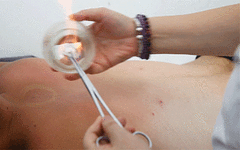
Cupping therapy is one of the treasures of traditional Chinese medicine, widely used in our country for a long time.
During cupping, a cup is used as a tool to create negative pressure through methods such as fire or suction, causing the cup to adhere to the skin surface, resulting in temporary local bruising. This achieves effects such as promoting meridian flow, invigorating blood circulation, reducing swelling and pain, and dispelling wind and cold. Cupping is generally performed using bamboo or glass cups. Bamboo cups have thinner walls than glass cups, providing stronger suction, and are made from natural, eco-friendly materials, making them more durable against impacts. Glass cups have smoother surfaces and are transparent, allowing for easy observation of skin color changes during the cupping process. Glass cups processed with special techniques are more heat-resistant than bamboo cups and are less likely to crack, resulting in a longer usage period. Vacuum cups are often made from plastic materials like PC, eliminating open flames during cupping, thus reducing the risk of burns. Additionally, individuals can adjust the level of negative pressure according to their comfort, making them easier to operate than fire cups. However, they lack the thermal stimulation of fire cups, making them less effective for patients with cold and damp constitutions. Individuals should choose the appropriate cupping method based on their condition, but safety precautions should be taken, and self-cupping without professional guidance is not recommended to avoid burns.

Four Techniques and Proper Methods for Cupping Therapy
Based on the severity of the patient’s condition, cupping can be divided into four techniques: flash cupping, sliding cupping, retained cupping, and bloodletting cupping.
Flash Cupping
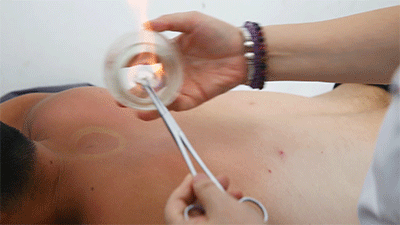 Steps❶ Wipe the skin surface where cupping will be applied with a cotton ball soaked in 75% alcohol.❷ Ignite a cotton ball soaked in 95% alcohol, quickly insert it into the glass cup, then immediately remove it and place the cup on the skin surface, then quickly lift it off.❸ Repeat the suction process multiple times until the skin becomes flushed.Flash cupping typically does not leave marks on the skin and is the least stimulating of the four techniques.
Steps❶ Wipe the skin surface where cupping will be applied with a cotton ball soaked in 75% alcohol.❷ Ignite a cotton ball soaked in 95% alcohol, quickly insert it into the glass cup, then immediately remove it and place the cup on the skin surface, then quickly lift it off.❸ Repeat the suction process multiple times until the skin becomes flushed.Flash cupping typically does not leave marks on the skin and is the least stimulating of the four techniques.
Sliding Cupping
 Steps❶ Wipe the skin surface where cupping will be applied with a cotton ball soaked in 75% alcohol. Apply a lubricating substance or liquid to the skin surface where cupping will be performed. The choice of lubricating substance varies based on the desired therapeutic effect. The image shows the use of purple grass oil, which has blood-invigorating properties.
Steps❶ Wipe the skin surface where cupping will be applied with a cotton ball soaked in 75% alcohol. Apply a lubricating substance or liquid to the skin surface where cupping will be performed. The choice of lubricating substance varies based on the desired therapeutic effect. The image shows the use of purple grass oil, which has blood-invigorating properties.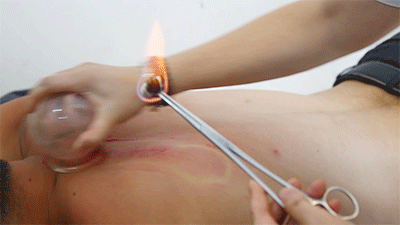

 ❷ Ignite a cotton ball soaked in 95% alcohol, quickly insert it into the glass cup, then immediately remove it and place the cup on the skin surface, holding the cup and sliding it along the meridians. After sliding cupping, if there are issues in the body, there will be large areas of cupping marks; if there are no issues, there will generally just be cup marks that fade quickly.
❷ Ignite a cotton ball soaked in 95% alcohol, quickly insert it into the glass cup, then immediately remove it and place the cup on the skin surface, holding the cup and sliding it along the meridians. After sliding cupping, if there are issues in the body, there will be large areas of cupping marks; if there are no issues, there will generally just be cup marks that fade quickly.
Retained Cupping



 ❶ Ignite a cotton ball soaked in 95% alcohol, quickly insert it into the glass cup, then immediately remove it and place the cup on the skin surface, leaving it for 10-15 minutes before removing it and cleaning the skin surface with a cotton ball.
❶ Ignite a cotton ball soaked in 95% alcohol, quickly insert it into the glass cup, then immediately remove it and place the cup on the skin surface, leaving it for 10-15 minutes before removing it and cleaning the skin surface with a cotton ball.
Bloodletting Cupping
 ❶ Wipe the skin surface where cupping will be applied with a cotton ball soaked in 75% alcohol.
❶ Wipe the skin surface where cupping will be applied with a cotton ball soaked in 75% alcohol.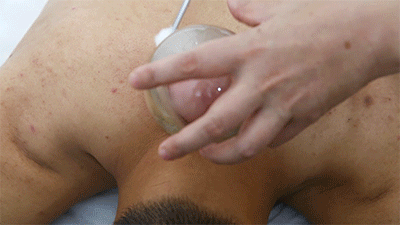 ❷ Use a disposable blood collection needle to prick the skin locally.
❷ Use a disposable blood collection needle to prick the skin locally. ❸ Retain the cup.
❸ Retain the cup. ❹ Remove the cup and clean the blood that has oozed out with a cotton ball.Cupping therapy has effects such as promoting meridian flow, invigorating blood circulation, reducing swelling and pain, and dispelling wind and cold. What do the cupping marks left on the body represent in terms of health issues? Let’s explore “Cupping Mark Diagnosis” together.
❹ Remove the cup and clean the blood that has oozed out with a cotton ball.Cupping therapy has effects such as promoting meridian flow, invigorating blood circulation, reducing swelling and pain, and dispelling wind and cold. What do the cupping marks left on the body represent in terms of health issues? Let’s explore “Cupping Mark Diagnosis” together.
Cupping Mark Diagnosis
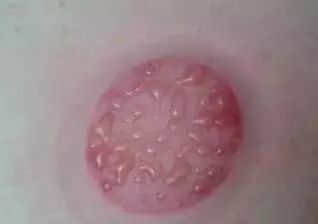 Cupping marks showing water vapor, blisters, or edema indicate that the patient has excess dampness, cold, or has been affected by cold and dampness;
Cupping marks showing water vapor, blisters, or edema indicate that the patient has excess dampness, cold, or has been affected by cold and dampness;  Cupping marks that are blood-red or dark red blisters indicate a pathological response of long-term dampness combined with blood stasis;
Cupping marks that are blood-red or dark red blisters indicate a pathological response of long-term dampness combined with blood stasis;  Cupping marks that are purple-red or purple-black, without stasis or fever, indicate that the patient has cold combined with blood stasis, with varying degrees of severity;
Cupping marks that are purple-red or purple-black, without stasis or fever, indicate that the patient has cold combined with blood stasis, with varying degrees of severity; 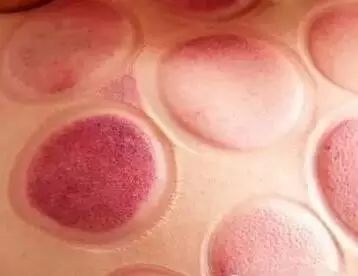 Cupping marks that are purple-red or purple-black, or show stasis, slight pain upon touch, and are accompanied by body heat, indicate that the patient has heat toxin syndrome;
Cupping marks that are purple-red or purple-black, or show stasis, slight pain upon touch, and are accompanied by body heat, indicate that the patient has heat toxin syndrome; 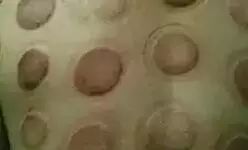 Cupping marks that are slightly itchy or show skin patterns indicate that the patient has wind syndrome;
Cupping marks that are slightly itchy or show skin patterns indicate that the patient has wind syndrome; 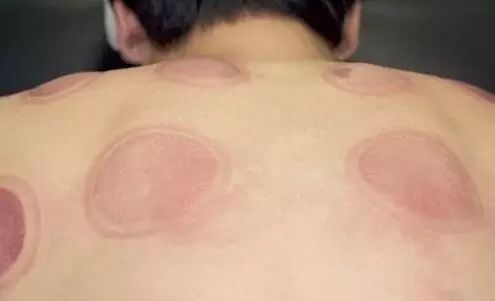 Cupping marks with no color change and feel cool to the touch indicate that the patient has a deficiency-cold syndrome.If there are no cupping marks or if the cupping marks disappear and return to normal color immediately after cupping, it indicates a relatively mild sub-health condition. If the marks do not fade after a few days, it suggests that the condition has persisted for a long time, requiring more attention to treatment and care. As the condition improves, the cupping marks will also lighten, indicating recovery.
Cupping marks with no color change and feel cool to the touch indicate that the patient has a deficiency-cold syndrome.If there are no cupping marks or if the cupping marks disappear and return to normal color immediately after cupping, it indicates a relatively mild sub-health condition. If the marks do not fade after a few days, it suggests that the condition has persisted for a long time, requiring more attention to treatment and care. As the condition improves, the cupping marks will also lighten, indicating recovery.
Indications, Main Points, and Contraindications for Cupping
1
Indications and Main Acupoints
Respiratory System IndicationsAcute and chronic bronchitis, asthma, pulmonary edema, pneumonia, pleuritis. Main points: Dazhù (大杼), Fengmén (风门), Píngyǔ (肺俞), Yīngchuāng (膺窗).Digestive System IndicationsAcute and chronic gastritis, gastric neuralgia, dyspepsia, hyperacidity. Main points: Gān yǔ (肝俞), Pí yǔ (脾俞), Wèi yǔ (胃俞), Gè yǔ (隔俞), Zhāngmén (章门).Acute and chronic enteritis. Main points: Pí yǔ (脾俞), Wèi yǔ (胃俞), Dàcháng yǔ (大肠俞), Tiānshù (天枢).Circulatory System IndicationsHypertension. Main points: Gān yǔ (肝俞), Dǎn yǔ (胆俞), Pí yǔ (脾俞), Shèn yǔ (肾俞), Wěizhōng (委中), Chéngshān (承山), Zú sān lǐ (足三里). Focus on the back and lower limbs.Arrhythmia. Main points: Xīnyǔ (心俞), Shèn yǔ (肾俞), Gè yǔ (膈俞), Pí yǔ (脾俞).Insufficient blood supply to the heart. Main points: Xīnyǔ (心俞), Gè yǔ (膈俞), Gāohuāng yǔ (膏肓俞), Zhāngmén (章门).Musculoskeletal System IndicationsCervical joint pain, shoulder joint and scapular pain, elbow joint pain. Main points: Tender points and surrounding joints for cupping. Back pain, lumbar pain, sacral pain, hip pain. Main points: Cupping based on the location of pain and surrounding joints. Knee pain, buttock pain, heel pain. Main points: Use small glass cups for cupping at the site of pain and surrounding joints.Nervous System IndicationsNeurogenic headache, occipital neuralgia. Main points: Dàzhuì (大椎), Dàzhù (大杼), Tiānzhù (天柱, with a face cushion), Zhìyáng (至阳).Intercostal neuralgia. Main points: Zhāngmén (章门), Qīmén (期门), and cupping in the intercostal pain area.Sciatica. Main points: Zhìbiān (秩边), Huán tiào (环跳), Wěizhōng (委中).Neuroparalysis of the limbs caused by rheumatic strain. Main points: Dàzhuì (大椎), Gāo máng yǔ (膏盲俞), Shèn yǔ (肾俞), Fēngshì (风市), and the affected areas.Cervical muscle spasm. Main points: Jiān jǐng (肩井), Dàzhuì (大椎), Jiān zhōng yǔ (肩中俞), Shēnzhù (身柱).Gastrocnemius muscle spasm. Main points: Wěizhōng (委中), Chéngshān (承山), and the affected gastrocnemius area.Facial nerve spasm. Main points: Xiàguān (下关), Yìntáng (印堂), Jiá chē (颊车), using small cups, only retaining for 6 seconds, then cupping again for 10 to 20 times.Diaphragmatic muscle spasm. Main points: Gè yǔ (膈俞), Jīngmén (京门).Gynecological IndicationsDysmenorrhea. Main points: Guānyuán (关元), Xuèhǎi (血海), Àshì (阿是穴).Amenorrhea. Main points: Guānyuán (关元), Shèn yǔ (肾俞).Menorrhagia. Main points: Guānyuán (关元), Zǐgōng (子宫).Leukorrhea. Main points: Guānyuán (关元), Zǐgōng (子宫), Sān yīn jiāo (三阴交).Pelvic inflammatory disease. Main points: Zhìbiān (秩边), Yāo yǔ (腰俞), Guānyuán yǔ (关元俞).Indications for Surgical Wounds and UlcersBoils. Main points: Shēnzhù (身柱) and the site of the boil, using small cups with face cushions for cupping.Multiple folliculitis. Main points: Zhìyáng (至阳), local small cups with face cushions for cupping.Lower limb ulcers. Main points: Local small cups with face cushions for cupping.Acute mastitis. Main points: After applying a warm compress with a new towel soaked in warm water, use medium or large cups for cupping, which can be repeated 5 to 6 times.
2
Contraindications for Cupping
High fever, convulsions, spasms; skin allergies or ulcerated areas; areas with thin muscles or uneven bones and areas with excessive hair are not suitable for application; pregnant women should be cautious with cupping on the lumbar and abdominal areas.
3
Precautions for Cupping
1. After guasha and cupping, do not take a cool shower or drink cold beverages for two hours; if taking a shower after two hours, use warm water.2. During guasha and cupping, do not use air conditioning or fans to avoid air convection.3. Do not perform cupping on an overly full or hungry stomach; wait at least one hour after meals before guasha or cupping.Source: Acupuncture and Tuina Association
Copyright belongs to the original author. If there is any infringement, please contact us for modification or deletion. Contact number: 0731-85054048
Recommended Reading
Join Group: Various specialized nursing WeChat groups, join quickly
Submission:Original articles related to nursing are welcome for submission
Video Account: Nursing tips and expert live broadcasts
Follow: WeChat public account categorized by nursing departments
Buy Books:Nursing books, click “Read Original” below to purchase

